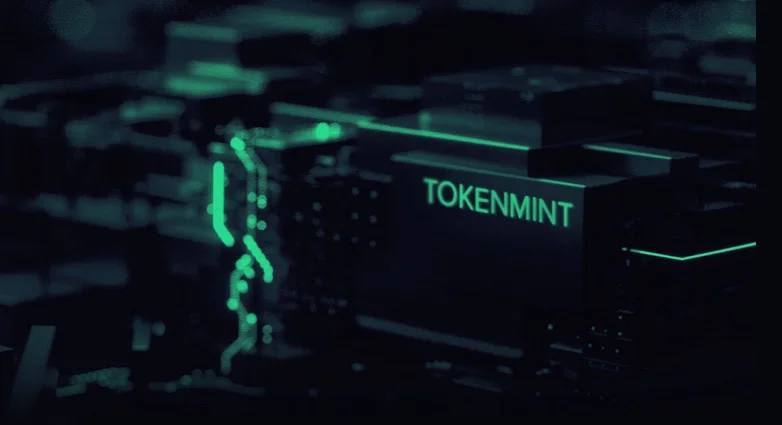Create your own cryptocurrency with our step-by-step guide, exploring blockchain platforms, smart contracts, token generators, and essential promotion tactics.
Creating your own cryptocurrency has become increasingly popular as the world of digital assets continues to grow. If you’re wondering, how can I create my own crypto, you’ve come to the right place. In this guide, we’ll walk you through the process of creating your own cryptocurrency, from choosing the right blockchain platform to using token generators and promoting your new digital asset.
1. Choose the Right Blockchain Platform
The first step in creating your own cryptocurrency is deciding which blockchain platform to build it on. Two popular platforms for creating cryptocurrencies are Ethereum and Binance Smart Chain. Both offer robust ecosystems for creating and managing digital assets.
Ethereum
Ethereum is a popular choice for creating cryptocurrencies due to its extensive developer community and support for smart contracts. To create your own cryptocurrency on Ethereum, you’ll need to develop an ERC-20 or ERC-721 token. ERC-20 tokens are fungible, meaning they are interchangeable with one another, while ERC-721 tokens are non-fungible and unique.
Binance Smart Chain
Binance Smart Chain (BSC) is another option for creating your own cryptocurrency. BSC is a blockchain network built by Binance, the world’s largest cryptocurrency exchange. BSC is compatible with Ethereum, allowing developers to easily create BEP-20 tokens, which are similar to ERC-20 tokens.
2. Develop Your Smart Contract
A smart contract is a self-executing contract with the terms of the agreement directly written into code. In the context of creating your own cryptocurrency, a smart contract defines the rules and functionality of your digital asset, such as the total supply, divisibility, and transfer rules.
If you have programming experience, you can write your own smart contract using a language like Solidity for Ethereum or BSC. Alternatively, you can hire a developer or use a token generator to create your smart contract.
3. Use a Token Generator
Token generators are online tools that simplify the process of creating your own cryptocurrency by generating a smart contract based on your specifications. Here are some popular token generators:
TokenMint
TokenMint is an Ethereum token generator that allows you to create your own ERC-20 or ERC-721 token without any coding experience. You can customize your token’s name, symbol, and total supply, and TokenMint will generate a smart contract for you.
Binance Smart Chain Token Generator
The Binance Smart Chain Token Generator is a user-friendly tool for creating BEP-20 tokens on the Binance Smart Chain. Like TokenMint, you can customize your token’s name, symbol, and total supply, and the generator will create a smart contract for you.

4. Deploy Your Smart Contract
Once you’ve developed or generated your smart contract, you’ll need to deploy it on the blockchain. This process involves sending a transaction with the smart contract code and any necessary parameters to the blockchain network. You’ll also need to pay a fee in the native cryptocurrency (e.g., Ether for Ethereum or BNB for BSC) to deploy your smart contract.
After deploying your smart contract, you’ll receive a contract address, which serves as a unique identifier for your cryptocurrency on the blockchain.
5. Verify Your Smart Contract
Verifying your smart contract means publishing its source code on a blockchain explorer like Etherscan (for Ethereum) or BscScan (for BSC). This allows users to review the smart contract code and ensures transparency. Verifying your smart contract is essential for building trust in your cryptocurrency and attracting potential users.
6. Promote Your Cryptocurrency
With your cryptocurrency created and deployed, it’s time to promote it and attract users. Consider the following methods to promote your digital asset:
A. Develop a Strong Brand
Creating a strong brand is essential for differentiating your cryptocurrency from others in the market. Develop a unique name, logo, and color scheme that reflects your cryptocurrency’s purpose and values.
B. Build a Website
A professional website is crucial for showcasing your cryptocurrency and providing information to potential users. Include details about your digital asset, such as its purpose, functionality, and the team behind it.
C. Engage with the Crypto Community
Connect with the cryptocurrency community by participating in online forums, social media platforms, and networking events. Engaging with the community can help you gain valuable insights, feedback, and support for your digital asset.
D. List Your Cryptocurrency on Exchanges
Listing your cryptocurrency on popular exchanges can increase its visibility and provide users with a platform to buy and trade your digital asset. Research the requirements for listing on different exchanges, as some may require specific documentation or fees.
E. Develop Partnerships
Partnering with other projects or businesses in the crypto space can help boost your cryptocurrency’s credibility and exposure. Look for potential partners that share similar goals and values, and explore ways to collaborate and support each other.
7. Maintain and Improve Your Cryptocurrency
After launching your cryptocurrency, it’s essential to continually maintain and improve it to ensure its long-term success. This may involve updating the smart contract, addressing security concerns, and implementing new features or functionality. Stay engaged with your user base and listen to their feedback to help guide your ongoing development efforts.